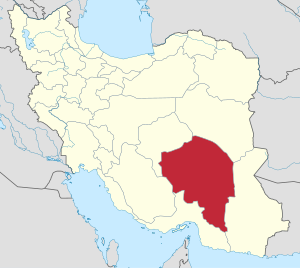| Qutlugh-KhanidsPersian: قراختاییان کرمان | |||||||||||||
|---|---|---|---|---|---|---|---|---|---|---|---|---|---|
| 1222–1306 | |||||||||||||
 Coinage of Qutlugh-Khanid ruler Muzaffar al-Din Mohammad Shah Sultan (r.1296-1304). Citing the Il-khanate ruler Ghazan Mahmud as overlord.
Coinage of Qutlugh-Khanid ruler Muzaffar al-Din Mohammad Shah Sultan (r.1296-1304). Citing the Il-khanate ruler Ghazan Mahmud as overlord.
| |||||||||||||
 Kirman (in present-day Kerman Province, Iran Kirman (in present-day Kerman Province, Iran | |||||||||||||
| Status | Sultanate | ||||||||||||
| Government | Monarchy | ||||||||||||
| History | |||||||||||||
| • Established | 1222 | ||||||||||||
| • Disestablished | 1306 | ||||||||||||
| |||||||||||||
| Today part of | Iran | ||||||||||||
The Qutlugh-Khanids (Persian: قراختاییان کرمان, otherwise known as the Qutlugh-Khanid dynasty, Kirmanid dynasty, or very rarely as the Later Western Liao) was a culturally Persianate dynasty of ethnic Khitan origin that ruled over Kirman (in present-day Kerman Province, Iran) from 1222 to 1306.
It was founded by Buraq Hajib, who emigrated from the Qara Khitai (Western Liao dynasty) during the collapse of the realm. Originally an independent entity, the Qutlugh-Khanid dynasty subsequently ruled as vassals of the Khwarazmian dynasty, the Mongol Empire and the Ilkhanate. The dynasty was removed from power by the Ilkhanid ruler Öljaitü, who appointed Nasir al-Din Muhammad ibn Burhan as governor of Kirman.
Later Western Liao
Although there was no mention of a dynasty called the "Later Western Liao" (后西辽) in traditional Chinese scholarship, Wang Zhilai wrote a paper On the Later Western Liao (关于"后西辽") in 1983, where he proposed to call the Qutlugh-Khanids the "Later Western Liao", thereby positioning the dynasty as an extension of the Western Liao.
End of the Kirmanid dynasty
The Mongol Ilkhanid ruler Öljaitü (r. 1304–1316) ended the Kirman Kara-Khitan dynasty in 1306 after the last of the Qutlugh Khans, Quțb al-Dīn II, neglected to pay his dues to the Mongol treasury. The Qutlugh Khan escaped to Shiraz, and his daughter later became the wife of Mubārriz al-Dīn Muhammad, the founder of the Muzaffarid dynasty.
List of monarchs of the Qutlugh-Khanid dynasty
- Baraq Hajib (1222–1235)
- Qutb al-Din Muhammad Khan (1235)
- Rukn al-Din Khwajajuk (1235–1252)
- Qutb al-Din Muhammad Khan (second reign; 1252–1257)
- Muzaffar al-Din Hajjaj (1257–1267/8) (under regency of Kutlugh Turkan)
- Kutlugh Turkan (1257–1282)
- Jalal al-Din Suyurghatmish (1282–1292)
- Safwat al-Din Padishah Khatun (1292–1295)
- Kurdujin Khatun (1295)
- Muzaffar al-Din Mohammad (1295–1304)
- Yuluk Shah (1295) — in rebellion
- Suyuk Shah (1301–1302) — in rebellion
- Qutb al-Din Shah Jahan (1304–1306)
See also
References
- 王 , 治来 (1983). "关于"后西辽"" [On "Later-Western Liao"]. 新疆社会科学 (in Chinese) (1): 91–94. ISSN 1002-4735.
- Biran, Michal. (2005). The Empire of the Qara Khitai in Eurasian History: Between China and the Islamic World. Cambridge University Press. pp. 87–89. ISBN 0-521-84226-3.
Sources
- Minorsky, V. (2012). "Ḳutlug̲h̲-K̲h̲ānids". In P. Bearman; Th. Bianquis; C.E. Bosworth; E. van Donzel; W.P. Heinrichs (eds.). The Encyclopedia of Islam, SECOND. BRILL Online.
